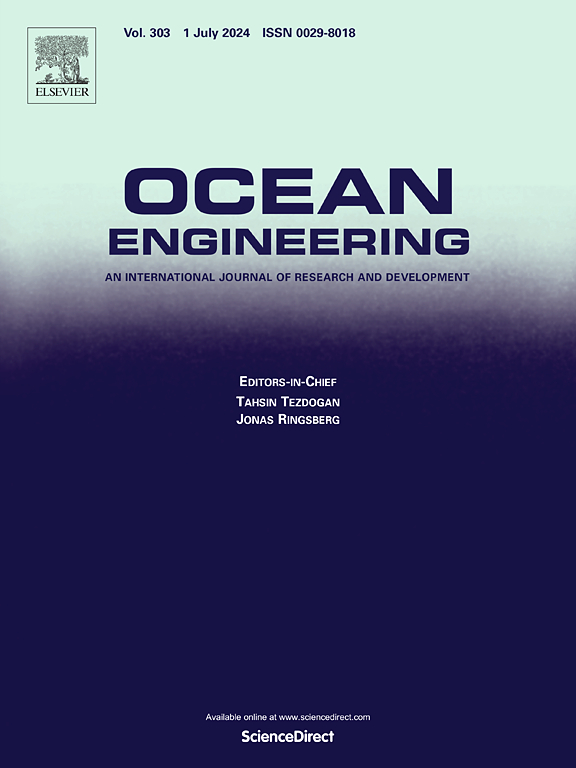一种实用的简化操作制导方法以避免参数滚转共振
IF 5.5
2区 工程技术
Q1 ENGINEERING, CIVIL
引用次数: 0
摘要
众所周知,在过去的几十年里,参数滚振引起了几起集装箱重大损失的事故。国际海事组织推出了第二代完整稳定性标准(SGISC)的临时指南,该指南还考虑了多层方法的参数横摇。在本研究中,描述了一种新的实用方法,用于在SGISC框架的背景下准备船舶特定的简化操作指南,以避免参数滚转,重点是大型远洋船舶。该方法基于规则纵波中非线性横摇方程的时域解,对俯仰和升沉运动进行准静态计算。纵向移动格里姆的有效波的概念,延伸到斜海,被利用。通过模型试验验证了该方法的有效性,并进行了比较直接的稳定性评估仿真。通过一个大型集装箱船设计的案例研究,复制了一个有充分记录的事故的情况,证明了船尾四分之一海域的参数滚动是正确的。结果表明,该方法能够有效地识别船舶的危险工况,为降低参数横摇共振的风险提供了一种可行的方法。本文章由计算机程序翻译,如有差异,请以英文原文为准。
A practical approach for simplified operational guidance to avoid parametric roll resonance
Parametric roll resonance is known to have caused several accidents with significant loss of containers over the past decades. International Maritime Organization has introduced interim guidelines for the Second Generation Intact Stability Criteria (SGISC) that consider also parametric roll with a multi-tier approach. In this study, a new practical approach for preparing ship-specific simplified operational guidance for avoiding parametric roll, in the context of the SGISC framework, is described, with focus on large ocean-going ships. The method is based on time-domain solution of non-linear roll equation in regular longitudinal waves, with quasi-static calculation of pitch and heave motions. The concept of longitudinally moving Grim’s effective wave, with an extension to oblique seas, is utilized. The method is validated against model test experiments, and comparative direct stability assessment simulations have also been conducted. A case study with a very large container ship design, replicating the conditions of a well-documented accident, is presented to demonstrate that the parametric rolling in stern quartering seas is properly captured. The results indicate that this kind of ship-specific simplified operational guidance can identify dangerous conditions, and therefore, this approach has potential use in planning operation of ships to reduce the risk of parametric roll resonance.
求助全文
通过发布文献求助,成功后即可免费获取论文全文。
去求助
来源期刊

Ocean Engineering
工程技术-工程:大洋
CiteScore
7.30
自引率
34.00%
发文量
2379
审稿时长
8.1 months
期刊介绍:
Ocean Engineering provides a medium for the publication of original research and development work in the field of ocean engineering. Ocean Engineering seeks papers in the following topics.
 求助内容:
求助内容: 应助结果提醒方式:
应助结果提醒方式:


